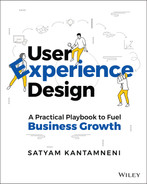CHAPTER 37
PRODUCT THINKING PROGRAM PLAY: How do I catalyze great product experiences?
The product thinking program play provides a framework for creating transformative experiences by identifying, prioritizing, and catalyzing all the moving parts of the organization together. It helps the organization work toward a larger experience vision while being mindful of the details, adjacent experiences, constraints, and tangible measures of success.
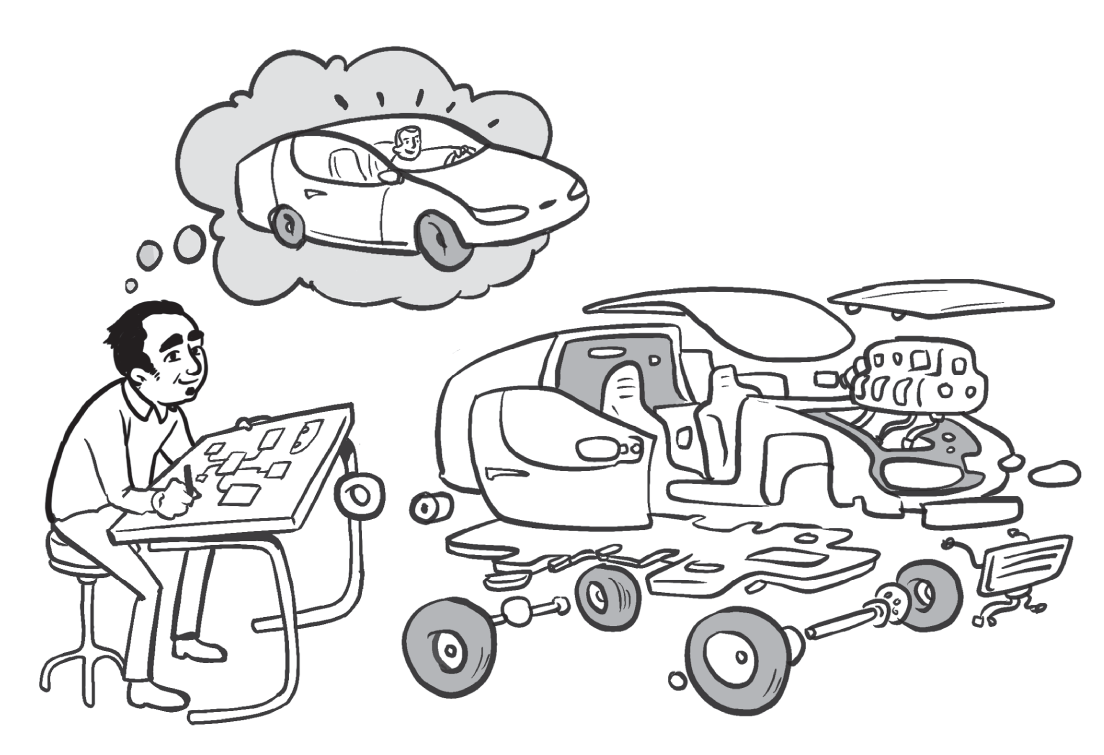
Who Are the Key players in the Product Thinking Program play?
| ROLE | WHO’S INVOLVED | RESPONSIBILITIES |
|---|---|---|
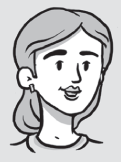
DRIVER |
|
|

CONTRIBUTOR |
|
|
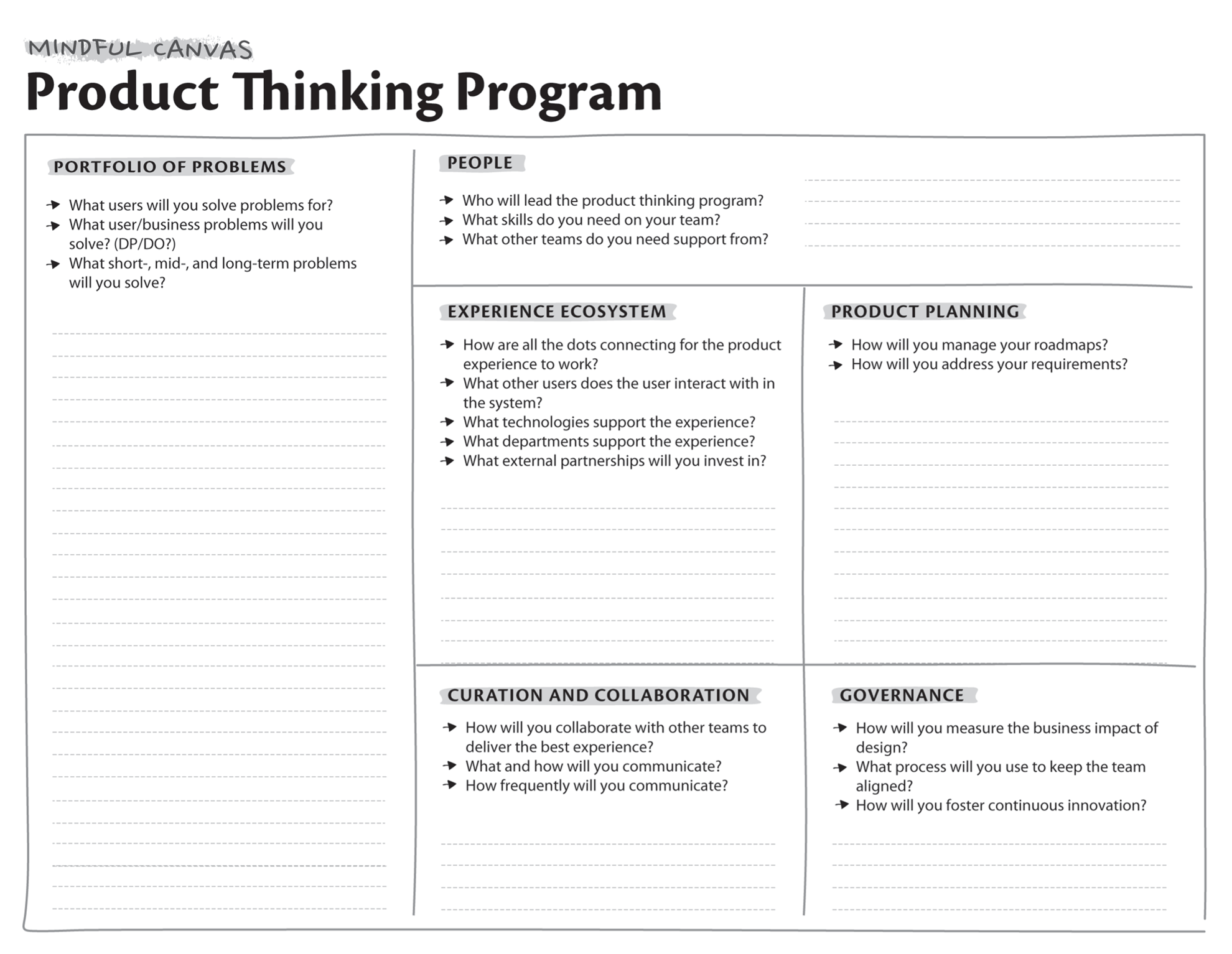
THE HOW
To build an effective product thinking program, you need to be mindful of:
1. Curating a PORTFOLIO OF PROBLEMS
To be a catalyst for great experiences that drive value to your users and to your business, you need to solve a broad spectrum of design problems (DPs) to achieve the short‐, mid‐, and long‐term goals for your experience vision (Chapter 20: “Experience Vision Play”). Along with this you would also need to focus on identifying a set of key design opportunities (DOs) to achieve the intended vision.
This mix of DPs and DOs prioritized across various time horizons is called the portfolio of problems. Like any healthy portfolio, the proportions of investment you make across the portfolio of problems should constantly be monitored and tracked on an ongoing basis.
2. Investing in the Right PEOPLE
Consider the following must‐haves as you bring on people for your product thinking program:
- Program driver: Organizations need a single owner who is accountable for the program, ideally the experience strategist. This will enable consistent oversight and collaboration on the portfolio of problems.
- Program partners: Ensure that you have dedicated time available to invest in strategic collaboration between design leaders, design practitioners, and design partners (especially product management and engineering lead) as there will be constant prioritization, trade‐off, planning, and constraint management related dialogue.
3. Factoring in the Larger EXPERIENCE ECOSYSTEM
Be mindful of the larger system in which the product experience is built. Never lose focus on the various elements that can directly or indirectly affect the product experience.
These could include influencers such as:
- Adjacent experiences and users that might impact your user;
- Which internal teams need to be involved;
- Which external partnerships to invest in;
- The different technologies that need to work together to drive functionality.
Think about how they might all come together in a single experience.
Make sure that experience roadmaps (Chapter 19: “Experience Roadmap Play”), experience ecosystem (Chapter 18: “Experience Ecosystem Play”), and experience benchmarks (Chapter 32: “Experience Benchmarking Play”) are actively curated and tracked across the product organization so you can help broaden the understanding of the system that is needed to connect all of the dots that enable a great product experience to work.
4. Effective PRODUCT PLANNING
Ensure that clear and effective plans are put in place that constantly identify the key priorities and activities around the product experience and always have up‐to‐date plans.
- Roadmaps: Use the portfolio of problems to understand problems and outcomes you need to solve, achieve, and coordinate cross‐functionally to sequence the efforts of the various teams that are helping you solve them (Chapter 35: “Product Experience Planning Play” and Chapter 36: “Cross‐Functional Collaboration Play”).
- Requirements: Make sure you actively collaborate with the product manager to manage your product backlog: the kind of documentation needed to keep everyone aligned on what to build and what outcomes to go for.
Use this documentation to anchor yourself and your team to the big picture as well as the smaller details. Cross‐reference them frequently to check that the two remain in sync to work toward the same vision.
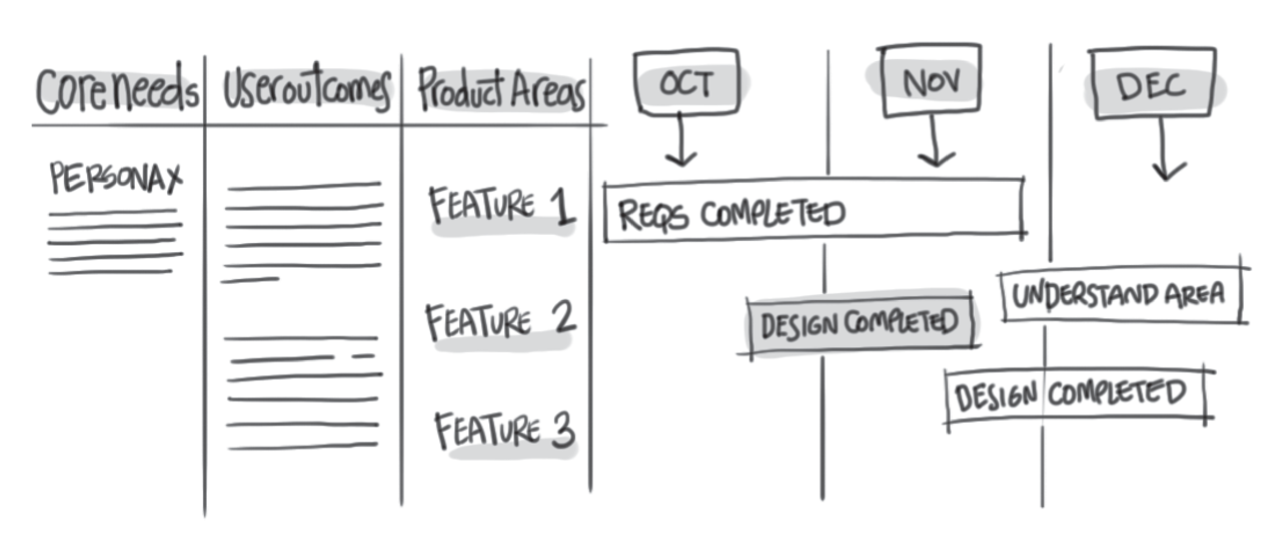
5. Have Frequent CURATION and COLLABORATION
Make sure all documentation and resources are accessible to other contributing teams for effective cross‐functional collaboration (Chapter 36: “Cross‐Functional Collaboration Play”). Work with your counterparts in the other contributing teams to establish the frequency and method of sharing work and giving feedback to ensure all efforts stay aligned to the vision.

6. Establish Systems of GOVERNANCE
To ensure the continued success of the product thinking program there are several key aspects of the program that need to be tracked on an ongoing basis:
- Impact of experience: Establish experience metrics and business metrics (Chapter 28: “Experience Metrics Play”) you need to track overall and for each contributing team, and measure them often. This will allow the teams to track the success of their individual contributions and have visibility into the larger impact on the overall vision.
- Team accountability and alignment: Standardize systems such as DACI to establish roles and responsibilities for each facet of collaboration. Not only will this assign clear accountability, but it will also streamline the decision‐making process.
- Continuous innovation: Revisit your portfolio of problems regularly and evaluate if you have been successfully solving a broad range of problems and if you are adding new problems on an ongoing basis. Collaborate with your counterparts who are driving the research program (Chapter 30: “User Research Program Play”) to make sure you are solving problems for today as well as exploring what to solve tomorrow.
IN ORDER TO MAXIMIZE THE VALUE OF THIS PLAY
- Develop an increased empathy for the other contributing teams: Having a deeper understanding of the craft that goes into other disciplines will help you collaborate and plan more effectively.
 RELATED PLAYS
RELATED PLAYS
- Chapter 18: “Experience Ecosystem Play”
- Chapter 28: “Experience Metrics Play”
- Chapter 30: “User Research Program Play”
- Chapter 32: “Experience Benchmarking Play”
- Chapter 34: “Design Problems and Opportunities Play”
- Chapter 35: “Product Experience Planning Play”
- Chapter 36: “Cross‐Functional Collaboration Play”
